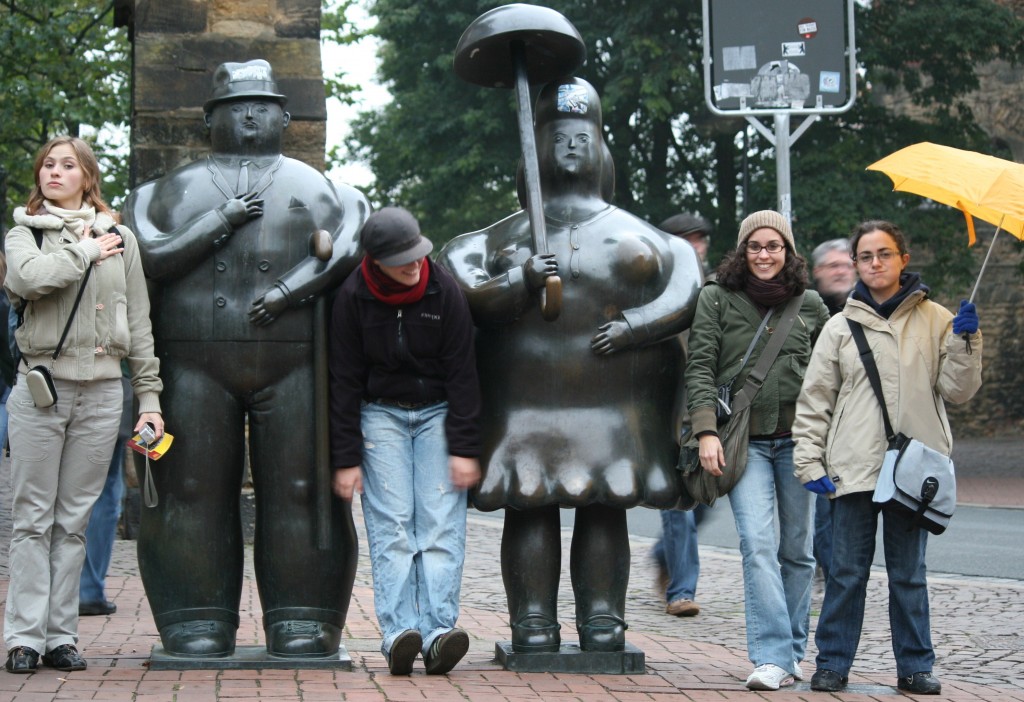During the weekend excursion to the Harz Mountains, a group of ECLA students led by faculty member Dirk Deichfuss visited the Mines of Rammelsberg nestled in the town of Goslar. The mines are impressive both from a technical and historical perspective, having been in continuous operation for over a thousand years, and reaching a depth of 400 meters. The mines of Rammelsberg are now recognized as a UNESCO World Heritage Site.
Students were greeted by a tour guide with the traditional miners greeting “Glückauf!” wishing us a safe descent into and return from the mine. We were then directed to the old changing area where hardhats were distributed. Before embarking on our descent into the mines themselves our guide gave a brief description of the ore distribution of the Rammelsberg site. As she explained, the mines are particularly unusual for two reasons. Firstly, because of the high percentage of valuable minerals: up to thirty percent silver, copper, zinc, lead and other metals per load of excavated material. Secondly, because of the distribution of deposits discovered in a grid-like shape for hundreds of meters down, rather than in the vein structure found in most mines. The wealth of silver deposits, initially accessible from the surface, was what led The Holy Roman Emperor Henry I to officially found Goslar as a Free Imperial City. The two rare features, deep deposits and high purity, are what allowed the Rammelsberg mines to be economically viable for over a millennium. Also of interest was a scale model of one of the water-powered wooden wheels used to draw the ore up from the depths of the mine from medieval times through to the beginning of the 20th century.
The group then walked partway up a hill to the doors of the mine entrance, which for all of its history was unassuming but very sturdy. We went through a long underground corridor that at times was less than two meters high. Although this forced a few of the taller members of the group to stoop on occasion, for the most part the mine was surprisingly spacious, with wide corridors and large open areas. In one such area, we saw a full-size, fully functional waterwheel, the size of which was all the more impressive because it had been brought into the mine piece by piece and re-assembled by the pale light of gas lamps!
As we descended deeper into the mine, the group viewed two more waterwheels and a large space where one of the previous wheels had historically stood. Along the way we viewed an underground mock-up that demonstrated how the laying of fire was used by engineers to mine ore in a delicate process that required the evacuation of the mines and precise control of airflow entering the mine.
As we travelled up approximately 40 meters of narrow metal steps to exit the mine, we were able to see the ladders, originally wooden and then later iron, that miners had to make use of when leaving work up until the 20th century. As miners would often be hundreds of meters down, travelling up the ladders could take more than an hour and on average there were one or two deaths each year from falling. This fact must be reckoned alongside the knowledge that, during most of its history, the mines never had more than about two hundred workers.
While everyone enjoyed the tour, by the time we emerged from the darkness of the mine there was a sense relief at being above ground again. We thanked our tour guide and walked back to the youth hostel, much more appreciative of the engineering expertise and physical determination that had built the Mines of Rammelsberg and the town of Goslar.
By David Duncan (PY ’10, USA)

